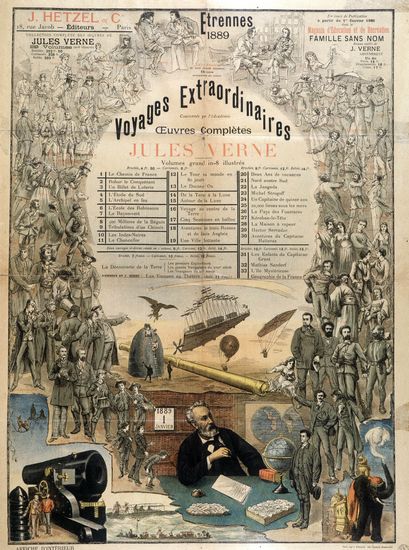 Of course Jules Verne is most famous for 20,000 Leagues Under the Sea. It’s a brilliant piece of speculative fiction that predicted, perhaps self-fulfillingly, numerous scientific advances of the 20th century. Of course he wrote other extraordinary novels that continue to fascinate and inspire readers to this day. From the Earth to the Moon is not one of them.
Of course Jules Verne is most famous for 20,000 Leagues Under the Sea. It’s a brilliant piece of speculative fiction that predicted, perhaps self-fulfillingly, numerous scientific advances of the 20th century. Of course he wrote other extraordinary novels that continue to fascinate and inspire readers to this day. From the Earth to the Moon is not one of them.
At his best, Verne wove fact and fiction into a thrilling and edifying mix that educators should study. Any Victorian child reading 20,000 Leagues Under the Sea would have mastered then-current marine biology like a modern child studies Pokemon characters.
Paying the Bills
Some commercial writers can churn out content of consistent quality. But it’s always obvious when Verne wrote for the muse and when he was paying the bills. Like Charles Dickens, many of Verne’s books were first published serially, and he was paid by the word. This resulted in an excess of description, verbiage, and general enumeration of unnecessary detail that is tedious and painful to the modern reader.
From the Earth to the Moon
He published Journey to the Center of the Earth (which I have not read yet) in 1864. Maybe it didn’t sell well right away, or maybe Verne squandered his advance. Maybe he was just worn out from the earlier, better book, but whatever the reason, From the Earth to the Moon was first published serially the following year, in 1865. It isn’t a very long book, and it is one of his famous series of Voyages Extraordinaires. But reading it was a slog.
There is little in From the Earth to the Moon to attract the interest of any but the Verne completist. The book summarizes in gratuitous detail everything then-known about the moon. It includes a history of lunar maps, and throws in a lot of American geography and simple physics as well. Where his better books complement science with adventure, From the Earth to the Moon lazily substitutes mockery of American culture. (To be fair, we make a pretty easy target – most of his jabs still strike their mark.) The jokes are funny, but no substitute for a good story.
Around the Moon
Verne must have thought so himself. Four years later he wrote Around the Moon. That book replaces the original premise of an American gun club determining in the absence of war to shoot the moon with his more typical man-of-science adventure. He also abandons the abrupt and unsatisfying ending with a proper resolution.



About the author